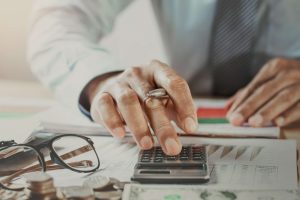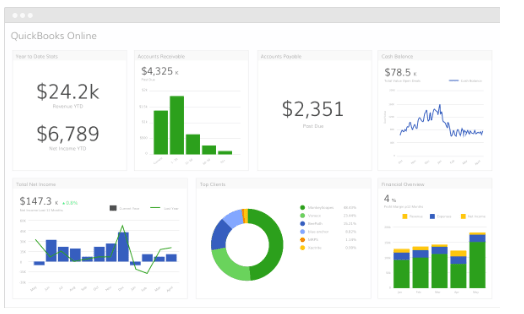
Assuming the company pays for the PP&E in all cash, that $100k in cash is now out the door, no matter what, but the income statement will state otherwise to abide by accrual accounting standards. The depreciation expense is scheduled over the number of years corresponding to the useful life of the respective fixed asset (PP&E). Depreciation is only applicable to physical, tangible assets that are subject to having their costs allocated over their useful lives. Factory machines that are used to produce a clothing company’s main product have attributable revenues and costs. The company assumes an asset life and scrap value to determine attributable depreciation.
What assets cannot be depreciated?
Note that while salvage value is not used in declining balance calculations, once an asset has been depreciated down to its salvage value, it cannot be further depreciated. The IRS publishes depreciation schedules indicating the total number of years an asset can be depreciated for tax purposes, depending on the type of asset. The recognition of depreciation on the income statement thereby reduces taxable income (EBT), which leads to lower net income (i.e. the “bottom line”).
Would you prefer to work with a financial professional remotely or in-person?
This amount reflects a portion of the acquisition cost of the asset for production purposes. Accumulated depreciation is the total amount of depreciation expense recorded for an asset on a company’s balance sheet. It is calculated by summing up the depreciation expense amounts for each year. To see how the calculations work, let’s depreciation expense meaning use the earlier example of the company that buys equipment for $50,000, sets the salvage value at $2,000 and useful life at 15 years. The estimate for units to be produced over the asset’s lifespan is 100,000. Accumulated depreciation refers to the cumulative depreciation expense recorded for an asset on a company’s balance sheet.
- When using depreciation, companies can move the cost of an asset from their balance sheets to their income statements.
- Here, we are assuming the Capex outflow is right at the beginning of the period (BOP) – and thus, the 2021 depreciation is $300k in Capex divided by the 5-year useful life assumption.
- Recognizing which assets are subject to depreciation ensures that your business’s financial records accurately represent the value of your assets over time.
- The difference between the debit balance in the asset account Truck and credit balance in Accumulated Depreciation – Truck is known as the truck’s book value or carrying value.
- On the balance sheet, depreciation expense reduces the book value of a company’s property, plant and equipment (PP&E) over its estimated useful life.
- Also remember that depreciation expense needs to be added back in when calculating working capital for your business, since it is not a cash expense.
Do you own a business?
Note that for purposes of simplicity, we are only projecting the incremental new capex. But in the absence of such data, the number of assumptions required based on approximations rather than internal company information makes the method ultimately less credible. The average remaining useful life for existing PP&E and useful life assumptions by management (or a rough approximation) are necessary variables for projecting new Capex.
Is depreciation an expense or income?
This knowledge empowers you to make informed decisions about asset investments, replacements, and overall financial planning for your business. When using depreciation, companies can https://www.bookstime.com/ move the cost of an asset from their balance sheets to their income statements. Neither of these entries affects the income statement, where revenues and expenses are reported.
- Depreciation expense is recorded on the income statement as an expense and represents how much of an asset’s value has been used up for that year.
- This is especially helpful if you want to pay cash for future assets rather than take out a business loan to acquire them.
- A company estimates an asset’s useful life and salvage value (scrap value) at the end of its life.
- Some examples of fixed or tangible assets that are commonly depreciated include buildings, equipment, office furniture, vehicles, and machinery.
- Since the balance is closed at the end of each accounting year, the account Depreciation Expense will begin the next accounting year with a balance of $0.
The assumption behind accelerated depreciation is that the fixed asset drops more of its value in the earlier stages of its lifecycle, allowing for more deductions earlier on. The depreciation expense, despite being a non-cash item, will be recognized and embedded within either the cost of goods sold (COGS) or the operating expenses line on the income statement. The units of production method recognizes depreciation based on the perceived usage (“wear and tear”) of the fixed asset (PP&E). The straight-line depreciation method gradually reduces the carrying balance of the fixed asset over its useful life. More depreciation expense is recognized earlier in an asset’s useful life when a company accelerates it. The machine in our example above that was purchased for $500,000 is reported with a value of $300,000 in the third year of ownership.

Double-Declining Balance Depreciation
Depreciation allows you to reduce your taxable income by claiming depreciation as an expense, minimizing your total tax bill. This formula will give you greater annual depreciation at the beginning portion of the asset’s useful life, with gradually declining amounts each year until you reach the salvage value. Remember, it’s always best to consult with a tax professional to ensure you’re following the correct depreciation methods for tax purposes.

Resources for Your Growing Business
If you’ve ever bought a new car, you know that the minute you drive it off the lot, the car depreciates in value. The two main assumptions built into the depreciation amount are the expected useful life and the salvage value. Explanations may also be supplied in the footnotes, particularly if there is a large swing in the depreciation, depletion, and amortization (DD&A) charge from one period to the next. Sandra Habiger is a Chartered Professional Accountant with a Bachelor’s Degree in Business Administration from the University of Washington.

Recent Comments